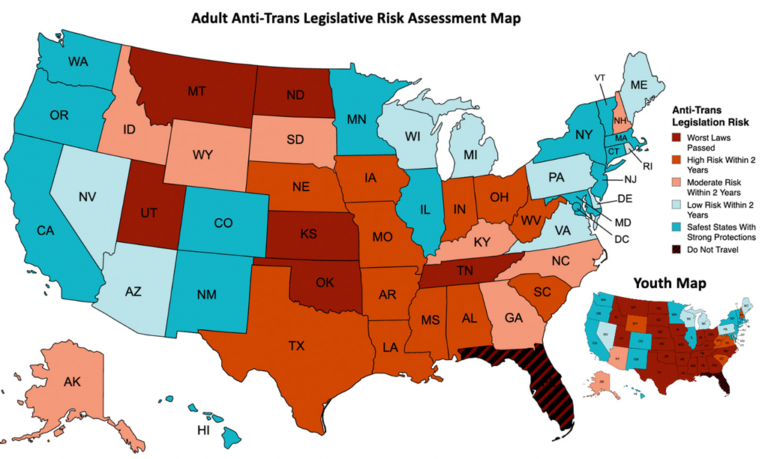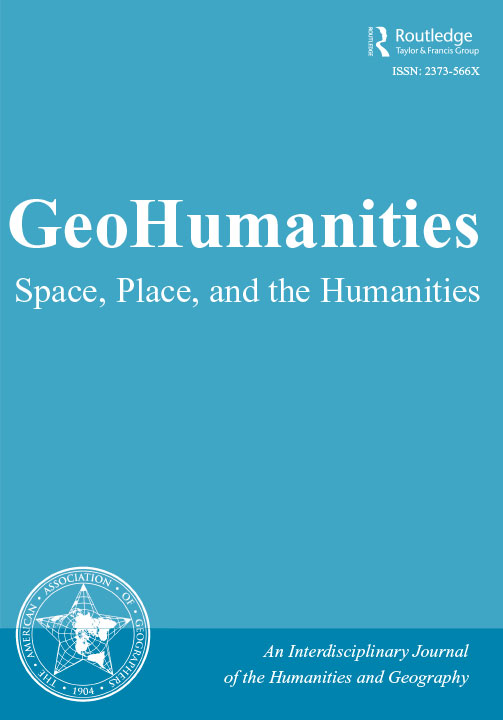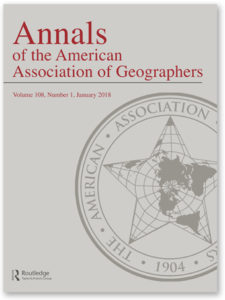Rights of Nature: The New Paradigm
Rights of Nature is a short-hand term for a form of ecological governance that both provides for and prioritizes Nature’s right to flourish. It also provides for various subsidiary rights, such as the right to restoration, the right to its natural processes, and the right to ecosystem functioning without interference. The term “Rights of Nature” gives the impression that the primary focus is defending Nature’s rights in courts of law. However, the Rights of Nature paradigm aims for a more fundamental shift in governance than only defending rights: placing Nature and its needs before human needs, so that human needs are reconfigured within Nature’s limits. Providing Nature with legal personhood and the guardians to defend its rights in court helps change the framework to a form of ecological governance, rather than laws that provide only for human needs. Currently, American law merely regulates human uses of the natural environment and provides for minimal curbs on overuse by such means as fines for pollution or, more rarely, refusal to grant permits for projects deemed too ecologically damaging.
What is Rights of Nature Governance?
The upsurge in interest in ecological governance is driven by the clear signals worldwide of increasing ecological degradation at systemic levels, ranging from climate change to greatly accelerated species loss across ecosystems. It is clear to many thinkers and advocates that the current industrial paradigm is now threatening ecological integrity worldwide and with it the ability of human communities to live sustainably and support critical needs for food, fresh water, decent shelter and ways of making a living.
Rights of Nature is less a specific template than an overarching ideal of ecological governance, the details of which are fashioned in unique ways in each culture that is seeking to enhance or restore sustainable living within Nature’s limits. This requires that Nature be granted the same rights to flourish and maintain itself as humans grant themselves in their legal structures. But underlying the need for legal protections is the concept that humans and Nature are in a relationship, rather than Nature merely providing a hoard of natural resources for indiscriminate human use. The legal structures discussed in Rights of Nature literature codifies the details of this restored relationship, rather than actually creating it.
Fully implementing a Rights of Nature or similar form of ecological governance, is the only way to reach true sustainability, because it places human activities within the framework of Nature’s laws and limitations, as other forms of governance do not. The problem, however, is how to define “sustainability,” as this overused term has lost both its mooring and meaning. Four criteria need to guide an understanding of the sustainability that a Rights of Nature paradigm aims for: (a) true sustainability prohibits mitigation or substitution for monetary or political gain; (b) sustainable projects create sustainable levels of human use, rather than encouraging continued over-consumption; (c) sustainable use shrinks the human footprint on the earth, not expands it; (d) true sustainability is a flexible and continuous process, as populations, technologies, and needs change, but it always maintains Nature’s biophysical integrity throughout, despite the dynamic changes inherent in ecological processes.
The History of the Rights of Nature Paradigm
The idea of granting Nature legal rights originated in a court case decided in 1972 by the United States Supreme Court, Sierra Club versus Morton. The Forest Service had issued permits for Disney Enterprises to build a complex of recreation and lodging facilities in Mineral King Valley in the Sierra Nevada of California. The Sierra Club Legal Defense Fund sued to stop the project, but the lower court held that the Fund would not be adversely affected by the project and thus had no legal standing to sue. The United States Supreme Court decided to hear the case. As the case was pending, Christopher Stone, a professor at the University of California School of Law, authored a law review article arguing that natural areas and objects should have legal rights to defend their ecological integrity from harms that would damage them.
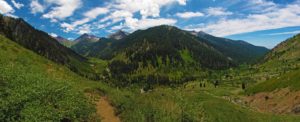
The country of Ecuador was the first to place Rights of Nature in its governing laws. Section 7 of the new Constitution of Ecuador adopted in 2008 says, “Nature, or Pacha Mama, where life is reproduced and occurs, has the right to integral respect for its existence and for the maintenance and regeneration of its life cycles, structure, functions and evolutionary processes.” The Constitution also grants Nature the right to be restored and requires the government to prevent or restrict activities leading to species extinction, ecosystem destruction, and permanent alteration of natural cycles. Significantly, the Ecuadoran Constitution also protects its people’s rights to food sovereignty, and the right, especially of indigenous peoples, to remain on their ancestral lands, protecting their rights to develop ancestral traditions and societies and retain ownership of their community lands.This article, entitled “Should Trees Have Standing?” caught the attention of Supreme Court Justice William O. Douglas. The Court ruled against the Sierra Club, but Justice Douglas wrote a now-famous dissent in which he said, “Contemporary public concern for protecting nature’s ecological equilibrium should lead to the conferral of standing upon environmental objects to sue for their own preservation.” Ultimately, the Sierra Club was able to prevent the destruction of Mineral King Valley, which is now part of Sequoia National Park. Professor Stone’s provocative article, suggesting that Nature be granted legal personhood to protect its own integrity, slowly began to attract more attention.
This new Constitutional provision on Nature’s Rights is slowly changing the face of Ecuadoran law. The very first lawsuit using the Rights of Nature provision was decided in Ecuador in 2011. It concerned a new road built along the Vilcabamba River in Loja Province and the dumping of construction rubble into the river. The Provincial Justice Court of Loja ruled in favor of the river, noting that damage to nature is generational in extent and that therefore the “precautionary principle” should guide development projects. The court required the government to take immediate corrective actions and appointed a delegation to oversee the cleanup.
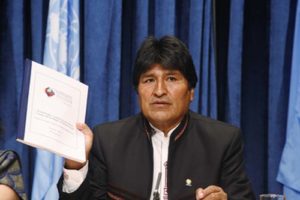
Other recent efforts include a state court in India granting legal personhood to the heavily polluted Ganges and Yamuna Rivers, and local Rights of Nature legislation in various regions of the United States. Most recently (in February 2019), the people of Toledo, Ohio passed a Bill of Community Rights and Nature’s Rights to protect Lake Erie, subject to nearly annual toxic algal blooms, mainly as a result of industrial agricultural practices in the lake’s watershed. The legislation passed with 61% of the vote, but is already subject to a lawsuit, as nearly all other such local attempts in the United States have been.Bolivia subsequently, in 2010, enacted a comprehensive Rights of Nature statute, and also hosted an international gathering of concerned organizations from around the world, which led to the founding of the Global Alliance for the Rights of Nature. Advocates and governments worldwide are also experimenting with innovative ways to approach ecosystem protection that reach past the current human-centered legal paradigm. One of the most successful is in New Zealand, where a fusion of Western legal concepts and Maori traditions of the Whanganui River’s importance as an ancestor, and Maori responsibilities to protect and conserve it, led to a formal agreement, finalized in 2012, to grant the river a legal identity. The implementing legislation passed in 2017. The definition of the river is adopted from the Whanganui iwi, the Maori group whose entire history is tied to the river. The river is defined as a living and integral whole, whose life is inseparable from the Whanganui iwi. Appointed guardians from the Whanganui iwi and the New Zealand government now protect the river. This successful project is considered a model for other efforts to blend indigenous law and tradition with Western legal structures for the protection of Nature.
The reason is not hard to seek: a Rights of Nature legal structure, if implemented nationwide, would constitute a monumental shift in the way Americans approach Nature, with relationship to Nature as the foremost goal, and the protection and flourishing of Nature given primacy over natural resources extraction and use. It would change the basis and thrust of the economy. Thus far, all attempts at Rights of Nature legislation in the United States have been local. These locally-approved laws clash with the hierarchical structure of American governance, which pre-empts most natural resources regulation to state or federal levels.
Questions and Challenges for a Rights of Nature Paradigm
Clearly, major changes in human use of the environment must take place; the ecological signals are unmistakable that current levels are unsustainable. The question is how best to move forward. There are many unanswered questions about ecological governance. How would Rights of Nature laws be implemented? What level of Nature would be granted the right to flourish: a watershed, an entire ecosystem, a single river, a valley, the climate of the world? Who would determine whether a given use interferes with Nature’s well-being and how would it be measured? If there are damages, how would they be measured, what would the remedy be, and how would it be implemented? How would human communities reconfigure themselves to live sustainably and stably, without instability, poverty and excessive resource use? How would human needs and Nature’s need to flourish without interference be balanced to create wholeness for both parties?
These questions and many more are being explored in a growing trickle of papers, articles, and books. CRC Press published the first book surveying Rights of Nature activity worldwide since an environmental philosophy work by Roderick Nash in 1989. The new book, released in 2017, begins the conversation on changes needed in human land use patterns (in the United States). It is titled Sustainability and the Rights of Nature: An Introduction, by Cameron La Follette and Chris Maser. The authors recognize that implementing ecological governance and deep sustainability models is something that must be done locally, place by place, region by region. Therefore, they are working on a second book, Sustainability and the Rights of Nature in Practice, in which advocates, scholars, and government officials from around the world discuss the path ahead, and the challenges and opportunities they face, from places as diverse as Germany and Kiribati, Bhutan and Scotland, Nigeria and Venezuela.
The problems humans now face around the world, ranging from marine plastics to climate change to severe soil erosion and ecosystem depletion, require communities and nations to apply every creative means to restore the human relationship with Nature. This requires the best scientific information on ecosystems, geography, hydrology and many other fields. But it also requires collaboration between people of differing traditions who share a landscape and region, to forge new partnerships and models that can govern humans’ return to a relationship with Nature, which sustains all.
Some cultures have retained much of their traditional relationship with Nature, and the customs and laws governing it, especially indigenous peoples in many regions. But the industrial paradigm of extraction and use without limits – or very minimal limits – is commonplace worldwide, and wreaking havoc on ecosystems, income inequality, and environmental health and resilience. It is clear that the existing legal framework, which favors human use and restricts use only to maintain, at best, minimal levels of ecosystem function, must change. Rights of Nature, and other potential forms of ecological governance now being explored, provide the path to a new and vital relationship between humans and Nature.
Cameron La Follette has a Masters in Psychology from New York University, and a Law degree from Columbia University. She is the lead author on Sustainability and the Rights of Nature: An Introduction, and lead editor on the forthcoming book Sustainability and the Rights of Nature in Practice.
